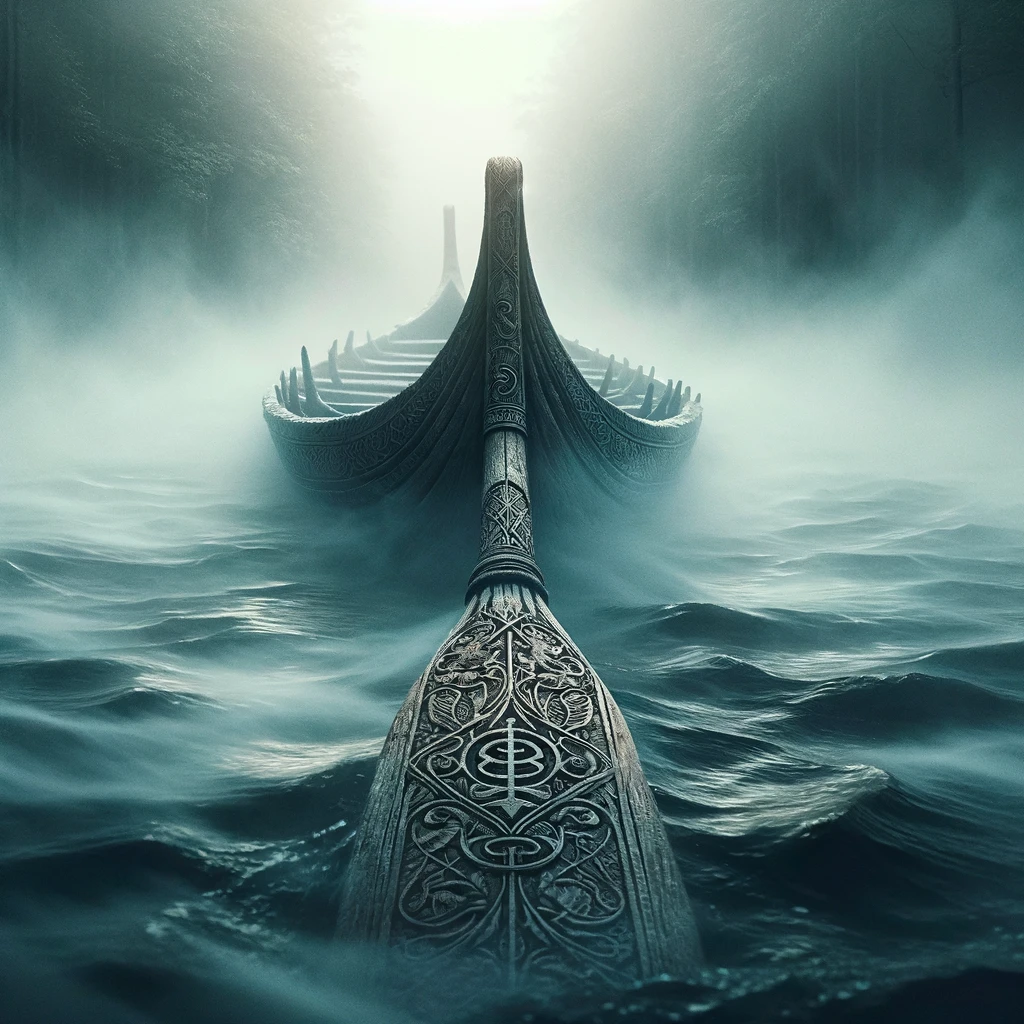Oarsmen artifacts offer a captivating portal into ancient maritime cultures and their rich seafaring heritage. These artifacts, often uncovered in archaeological digs, provide invaluable first-hand insights into the lives of communities intrinsically connected to the sea.
In this comprehensive guide, we’ll explore the origins, symbolism, evolution, and significance of oarsmen artifacts across cultures and eras. You’ll also discover real-life tales of trade and warfare on age-old oceans that these artifacts reveal.
So come aboard as we set sail to unravel the mysteries held within these relics of ancient nautical prowess! The stories on the horizon promise not to disappoint.
Key Takeaways
- Oarsmen artifacts provide tangible clues into the sailing skills, naval warfare tactics, trade priorities, and artistic expressions of ancient maritime societies.
- Originating as early as 2500 BC Egypt, oars propelled river vessels long before sails emerged. Over centuries, materials and artistic embellishments became more sophisticated in cultures like Greece, Rome, and Scandinavia.
- Certain decorations on handles and blades denoted social status, religious symbols, or wartime achievements. Oars could signify authority and privilege.
- Meticulous preservation and restoration methods combat age-related decay processes to maintain fragile wooden, metallic, and composite artifacts for future museums and research.
- Tactile, engaging museum displays spotlight oarsmen artifacts as vehicles for visitors to envision the vivid adventures of ancient mariners who propelled the development of civilizations through naval power.
Why Oarsmen Artifacts Matter
Oarsmen artifacts give us tangible glimpses into how vital seafaring was in ancient societies. Objects like oars, paddles, rowing benches, or tillers offer glimpses into:
- Seafaring skills & techniques: Construction and wear patterns showcase how different materials and propulsion methods fared on ancient vessels.
- Connection to the sea: Societies with more oarsmen artifacts depended heavily on maritime trade, travel, and food sources.
- Naval warfare: Battle-damaged artifacts provide evidence of early weaponry, ship-to-ship combat, and other naval tactics.
These precious clues allow us to better understand daily life, priorities, challenges, and innovations in past coastal communities.
Tracing Origins Back to Ancient Egypt

The earliest known oarsmen artifacts hail from ancient Egypt around 2500 BC. Reliefs and decorations on burial tombs and temples depict Nile river vessels with rows of oarsmen. Having people power the crafts allowed transporting goods and people upstream and down without relying solely on the current.
Early oar designs were simple wooden poles, sometimes with carved handles for grip. Blades were flat and wide to generate needed thrust in the water.
As shipbuilding skills became more advanced in areas like Phoenicia, Greece, and Scandinavia, the role of oarsmen and the tools of their trade grew more specialized and sophisticated.
The Evolution of Oarsmen Artifacts Over Time

We can trace how oarsmen artifact craftsmanship improved in tandem with innovations in ship construction, navigation, and propulsion technologies:
Early Rowed Watercraft
Time: Bronze Age, 4,000 – 1,000 BC
Oarsmen Artifacts:
- Concave oar blades
- Pinewood oars
- Stone and antler paddles with carved grips
Vessels: Canoes, rafts, hide boats for fishing and river travel
Galley Warships of Antiquity
Time: Antiquity, c.700 BC – 500 AD
Oarsmen Artifacts:
- Fir and cedar oars up to 50 ft long
- Sword-like bronze oar blades
- Ceremonial steer oars with figural handles
Vessels: Biremes and triremes with rowers stacked on multiple decks
Viking Longships
Time: Viking Age, c.750-1050 AD
Oarsmen Artifacts:
- Carvings depicting Norse Sea myths
- Iron rigging and reinforcements
- Broad, flat blades for open seas
Vessels: Sleek oak longships with a single row of oarsmen
This shows how oarsmen artifacts tracked alongside broader evolutions in seafaring prowess across cultures.
Decoding Symbols and Status Markers

In many societies, oarsmen artifacts carried symbolic value beyond their functional purpose. Certain decorations or materials denoted high-status roles.
Norse Vikings
Elaborate dragon carvings on oar blades signified nobility and the protection of mythical sea beasts. Stone blades indicated commanders.
Ancient Egypt
Long, painted steering oars displayed at the Cairo Museum came from vessels carrying pharaohs along the Nile.
Phoenicia
Ship captains had golden steer oars as badges. Credit: National Museum of Beirut
These symbolic oars showcase how position and authority transferred into the maritime domain.
Preserving Ancient Oarsmen Artifacts

Protecting fragile wooden and metallic oarsmen artifacts for future generations poses substantial challenges requiring careful preservation techniques:
Preventing Deterioration
Environmental factors hasten decay. Experts recommend:
✓ Stable relative humidity around 55%
✓ Cool, even temperatures
✓ Low light conditions
✓ Contaminant-free display cases
Safe Handling
Meticulous care prevents surface damage:
✓ Nitrile gloves for staff
✓ Supporting full length when moving
✓ Avoiding excess vibration/shaking
Restoration Methods
Non-invasive techniques mend tears or stabilize corroding metals. Examples include:
- Adhesives to bond cracks
- Reshaping distorted wood
- Polishing corroded blade edges
With diligent preservation efforts, fragile oarsmen artifacts can be maintained for many centuries to come.
How Museums Showcase Maritime Heritage

Oarsmen artifacts are highlights of many leading maritime and archaeological museums. Curated displays transport visitors back in time using creative methods:
Artifact Spotlighting
Museums spotlight oarsmen artifacts in dedicated exhibits with supplementary images, maps, and nautical scenes to contextually enrich.
Engaging Interpretive
Tactile exhibits, multimedia guides, hands-on demos, and even decorative vessel replicas provide interactive elements.
Educational Programming
Public lectures, activity guides, and workshops help explain further the context around the artifacts to visitors.
Thanks to careful curation, anyone can vividly glimpse glimpses into our seafaring past.
Tales of Adventure encoded within Oarsmen Artifacts

Studying details preserved within oarsmen artifacts allows maritime historians to piece together likely stories of trade missions, exploratory voyages, military conquests, and even shipwrecks across ages.
Clues embedded within certain artifacts tell tantalizing tales:
- Barnacle-encrusted blade suggests wrecks or harsh storms
- Battle gashes along an oar’s shaft indicate combat
- Evergreens native to distant lands stuck in resin imply far-reaching expeditions.
Though mute, oarsmen artifacts still manage to communicate incredible adventures on risky waters so very long ago. We just need to closely examine and interpret the clues left in their surfaces.
Frequently Asked Questions
What materials were ancient oars typically made from?
Woods like pine, fir, cedar and oak were common for their strength, flexibility and buoyancy. Metals like copper and iron reinforced edges against water damage. Decorative materials included gold, ivory, gemstones and exotic woods.
How large could ancient oars grow?
On Greek and Roman war galleys, enormous oars between 30-50 feet long took multiple men to operate in synchrony. The longer leverage increased speed to ram enemies.
How were oars powered on ancient ships?
Rowers sat along benches, bracing with their feet to pull extremely heavy oars. Egyptian images show 1-5 men per oar. Rhythm and coordination was vital. Later, innovations like outriggers improved mechanical advantage.
What other artifacts appear alongside ancient oars?
Archaeologists often unearth pieces of wooden benches, steering devices, rope guides, ceramics, grappling hooks and even food remains alongside oarsmen post artifacts as remnants of life aboard.
How were oars navigated in early paddle boats?
Light single-sided paddles often had one flat and one curved edge. Rowers alternated sides, creating torque to turn small boats rather than relying on a rudder.
Let me know if you need any other sections expanded or have additional questions!


Average Rating